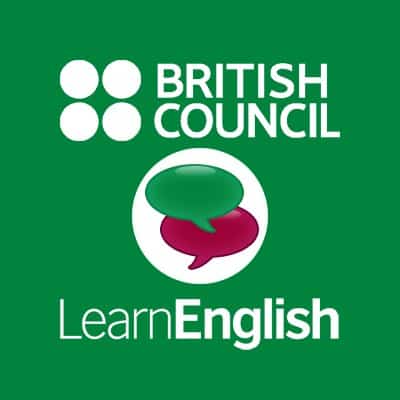
How to Teach English with Videos: Resources and Activities
Using video clips is one of my top language-teaching strategies. It’s a medium that entertains and motivates English learners in my classroom.
But with the mountain of videos out there, which ones do you use? I’ve put together a list of resources for teaching English with videos. And because English language learners come with different levels and experiences, these video resources and activities span all the age ranges.
Contents
- Video Resources for Teaching English
- English Video Activities for Beginners
- English Video Activities for Intermediate Students
- English Video Activities for Advanced Learners
Download: This blog post is available as a convenient and portable PDF that you can take anywhere. Click here to get a copy. (Download)
Video Resources for Teaching English
British Council

British Council offers a plethora of online activities devoted to young kids, teenagers and adults. Alongside the numerous interactive activities on each page, you’ll find a video section with clips geared toward language learners.
If you’re working with little ones, you’ll love their page for kids, where you can find videos like this one about superheroes.
For teenagers, I found a comedy sketch about a frustrated worker who tends the park on the Learn English Teen page.
Check out the video zone on the page for adults to check out a short clip of a scene from Game of Thrones.
The best part of this site? It provides tasks, activities and worksheets to accompany its videos. How’s that for saving you a bit of time?
FluentU

FluentU provides more than 1,000 authentic English YouTube videos loaded with language-learning tools.
Every video comes with interactive subtitles. Students can click any unfamiliar English word for an in-context definition and grammar info.
After each quiz and playlist, students can take quizzes to review what they’ve learned. FluentU tracks their progress, so you can see how each learner is grasping the new information.
Best of all, the software is flexible. It’s simple to use FluentU as a group in your classroom, or you may choose to have students watch videos and take quizzes individually in the computer lab or assign sections as homework.
WOW ENGLISH TV
I’m not going to lie. My child introduced WOW ENGLISH TV to me. However, it’s one of the few YouTube channels for children that also appeals to adults. I may have been caught watching over his shoulder a time or two.
You follow the antics of Steve and his pet bird, Maggie. The videos include lots of songs, repetition and opportunities for the listeners to respond.
And because the topics are obvious, it’s easy to formulate questions or activities around the clips.
Esl-lab.com

These short videos feature language teacher Randall and complement the listening activities on his site. Some of the clips are as short as 26 seconds and are accompanied by a few comprehension questions about the material.
The topics of the videos range from everything from good etiquette to renting an apartment. Esl-lab clips are better suited for adults, and they would be a great addition to units you’re already teaching.
Learn English Today

This website is designed specifically for English teachers and includes a number of lesson plans, resources, videos and tools for educators.
In the section devoted to listening and video resources, teachers can find clips with a script, vocabulary focus and comprehension questions and much more.
This is a great place for beginning and experienced English teachers alike to find what they need for their students.
English Video Activities for Beginners
We know the abilities of our students vary widely in each level. There are absolute beginners who are just starting their English journey and those who can communicate simple ideas about the topics most relevant to them.
Either way, our focus for these students is typically on increasing their vocabulary and getting them comfortable with frequently-used expressions and simple sentence structures.
1. Scratch off
Activity overview: Give students a list of words and let them mark off items as they see them appear in the video.
Possible video: Funny Kids and Animals at the Zoo (or this nature video from BBC Earth)
Lesson sequence:
- Build background knowledge (five to seven minutes): Show pictures of the animals and go over their names. Students repeat various times. Write the names on the board as you go over them. This becomes your word bank.
- Then, show the pictures in random order and have students name the animals. Put up pictures of three animals. Name an animal and have students put up a finger to indicate which number it is in the sequence. For example, if you say tiger and it’s the third picture, then students will hold up three fingers.
- Give students a page with a list of 10-20 animals (or students can write the words from the board on a piece of paper) that come up in the video (not in order).
- Students will then scratch off the animals as they see them.
2. Out of Order
Activity overview: Hand out papers with a list of phrases (e.g., Steve saw ten orange pumpkins). Students will cut out each sentence individually. As the clip progresses, students put the sentences in order as they appear in the video.
Possible video: Halloween Songs and Stories for Kids
Lesson sequence:
- Build background knowledge (five to seven minutes): As in the activity above, find pictures of the objects that will appear in the video (e.g., ghosts, pumpkins, vampires) and follow the same procedure from the activity above.
- Because this video is about Halloween, you might even read a short story about Halloween or do another quick Halloween activity instead.
- From the video clip, choose sentences, type them in a Word document and print out copies for your class. Students will then cut them out. Alternatively, you can write the sentences on the board (not in order) and assign each a number. Here are some potential sentences:
- Oh, look! It’s a pumpkin!
- How many pumpkins are there?
- It’s a witch!
- The witches are flying into the house.
- Let’s have a look through the gate.
- What can you see in the window?
- Once the sentences are cut, choose one to read out loud and have students hold up the correct sentence or hold up a finger to indicate the correct number if you wrote the sentences on the board.
- Now the class is ready to watch the clip and put the sentences in order. After watching and modeling the first minute or so with a couple of sentences, allow the students to complete the activity independently by finishing with the rest. They’ll then check their answers with a partner and watch the clip again to verify the answers are correct.
- Optional activity: When they’ve finished verifying their answers, have the students make a foldable book where they paste the sentences and draw a picture to illustrate them. Choral read the book and encourage the students to read with expression.
English Video Activities for Intermediate Students
Lessons for intermediate students continue to build vocabulary, but they also help learners improve their writing skills and understanding of increasingly complex sentences and abstract concepts.
3. Take Notice
Activity overview: Students write what they notice from the video using sentence stems (I notice, I see, there is, etc.). They write as many sentences as they can, then compare with a partner to see if they missed something and add it to their list. They can also create drawings of the phrases to increase comprehension.
Possible video: Motivation video
Lesson sequence:
- To model this activity, find an appropriate picture prompt with lots of activity or a scene from Hidden Objects. If you’re working with young learners, you can find picture prompts on BrainPOP.
- Project the image to the class, and tell them a few things you notice. Make sure you’re using complete sentences and write a couple of them down. To begin to bring the students in, ask them what they notice and record their responses.
- Now project another image or scene and set a timer for one minute. Have the students write as many sentences as they can about what they notice in the picture. Then let them work with a partner to see if they noticed anything else that they want to add to their list.
- Watch the clip, pause for about a minute and instruct students to write what they notice. You might pause every now and then to give students an opportunity to write their thoughts.
- Finally, let them discuss with a partner to see if there’s anything they missed. If you want to make it more competitive, the pair that has the most ideas wins a prize!
4. Picture This!
Activity overview: Students take notes, but instead of using words, they use pictures. However, they must also label the pictures (terms provided by the English teacher) and use short phrases to describe their notes.
They then create a comic strip showing a sequence of approximately five events using the words/phrases.
Possible video: Funny Monkeys Stealing Things Compilation (There isn’t a lot of dialogue in this clip. Rather, the students create the sentences and phrases from what’s seen in the video. Remember, humor has been shown to increase learning!)
Lesson sequence:
- You’ll watch this clip twice. The first time is to create a word bank. Students can call out terms to you as they see them or you can put students in pairs, where one partner is the scribe and one is the caller, who gives the scribe the words as they see the corresponding images.
- Afterward, watch the clip again and have the students draw out a couple of their favorite parts. Let them work with a partner and label the pictures with the words and phrases from the word bank.
- Students then create a comic strip from a scene or scenes from the clip, or they can create their own comics using a brand new idea. However, they must include the words and phrases from the word bank.
English Video Activities for Advanced Learners
Advanced or proficient English speakers understand the majority of what’s spoken to them. They should be able to summarize information from less familiar and even complex topics, and their spoken expression comes more naturally.
5. Set the Scene
Overview: Half of the students watch the clip, and the other half do not. The first half takes notes. Students then work with partners and the one that watched the scene describes it to the other.
The second partner then watches the clip and evaluates the description for accuracy.
Possible video: Macey Meets President Obama
Lesson sequence:
- Pair up the students and label them partner one and partner two. Partner one watches the clip as the others put their heads down or step out of the room. Partner one then describes the clip to their partner, who writes down the main points.
- Partner two then watches the clip and evaluates the clip and description for accuracy.
- Partner two talks with their partner to discuss changes to the description.
- Both partners write an accurate summary of the clip.
6. Describe, Describe, Draw
Activity overview: Break the group of students into thirds. One-third of the students watch the clip, then describe it to the second group. That group then describes it to the third group, who then has to draw the scene. All watch the video for accuracy.
Possible video: TOP 10 Best Action Scenes from Marvel Movies (teacher may select one or more scenes)
Lesson sequence:
- Put students in groups of three. Number the partners as one, two or three.
- Partner one watches the clip either on their device or as a class.
- While partner one watches the clip, give the other partners the topic of the video and let them brainstorm possible words and phrases they might encounter.
- After watching the clip, partner one describes a scene or two (the clip above has a series of action scenes from Marvel movies) to partner two.
- Partner two then describes the scene to partner three, who draws it.
- All watch the video for accuracy and discuss changes in the description and drawing.
- Close the activity by having students write in their journals. They can write a summary or you can give them a sentence stem like “I really liked when…”
- I’ve also stretched students to create their own scene or write a poem that uses the words/phrases from the clip. (This was actually a suggestion from a student!) You can even give them the opportunity to choose from the options because we know that choice increases motivation.
7. Be the Teacher
Overview: Students watch the clip and choose the most important points to “teach” their partner.
Possible video: 30 Minutes of Uninterrupted Kid President!
Lesson sequence:
- Introduce the following sentence stems to your students. Read the stem, have students repeat it, then complete the stem. Ask for a volunteer to finish the stem, then let students complete the stem with a partner. This needs to be a quick activity—no more than five minutes.
- One thing to remember…
- It’s important…
- One thing you should know…
- According to…
- I think…
- I believe…
- Partner one watches the video and writes down the main points. They can write as many points as they want, but they have to incorporate two or three sentence stems.
- Partner one then teaches the points to partner two.
- Partner two asks about a couple of questions. Here are some possible stems:
- What is the most important point from the clip?
- One thing I don’t understand is…
- One question I have…
- I didn’t understand…can you explain that again?
- After the questions have been answered, both partners discuss and determine the most important two ideas to share with the class.
Now you have plenty of lessons and videos to help your students, no matter their level. You can also use themed videos for different holidays and international days, like Earth Day, Christmas and more.
Download: This blog post is available as a convenient and portable PDF that you can take anywhere. Click here to get a copy. (Download)


